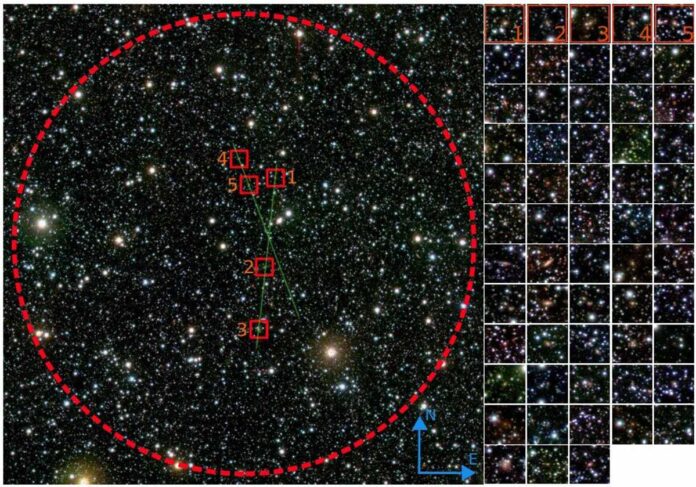According to a new study, a little-studied region of the sky may be hiding a big surprise. Scientists at Argentina’s National University of San Juan have discovered what appears to be a new galactic cluster by probing the so-called “zone of avoidance.” Of course, the cluster is not new; we’ve just never seen it before.
The zone of avoidance (ZoA) is the region obscured from view by our Milky Way galaxy’s central bulge. This region accounts for between 10% and 20% of the sky. It is too dense with stars, gas, and dust for most instruments to peer through to the other side. That’s a lot of the universe hidden from view, but the technology we use to observe it is improving.
Astronomers from the National University of San Juan working on the VVV Survey used the European Southern Observatory’s Visible and Infrared Survey Telescope for Astronomy (VISTA) in Chile to confirm previous findings that suggested a large structure on the opposite side of the ZoA. While visible light is completely blocked by the Milky Way’s core, lower-frequency infrared light can pass through. It’s similar to how the James Webb Space Telescope, which operates in the infrared, can see more stars in the Pillars of Creation than Hubble.
This week, the team published a new preprint study on the Arxiv server. It features observations of the VVVGCl-B J181435-381432 galaxy cluster. Yes, it’s not a particularly catchy name. According to Vice, the infrared glow captured in the VVV Survey previously suggested an “overdensity” region in the ZoA. The team, led by astronomer Daniela Galdeano, believed this was evidence of an unidentified extragalactic structure. The data collected with VISTA, is in good agreement with what scientists expect for near-infrared observations of galaxy clusters.
So far, we’ve only gotten a taste of what lies beyond the galactic core. The team used the Gemini South telescope and its FLAMINGOS-2 infrared detector to measure the redshift of five possible galaxies. These galaxies appear to be three billion light years distant. The researchers believe this is only a sliver of the entire cluster. The results have yet to be confirmed. And teams around the world will undoubtedly begin paying closer attention to this previously overlooked region of the sky.

